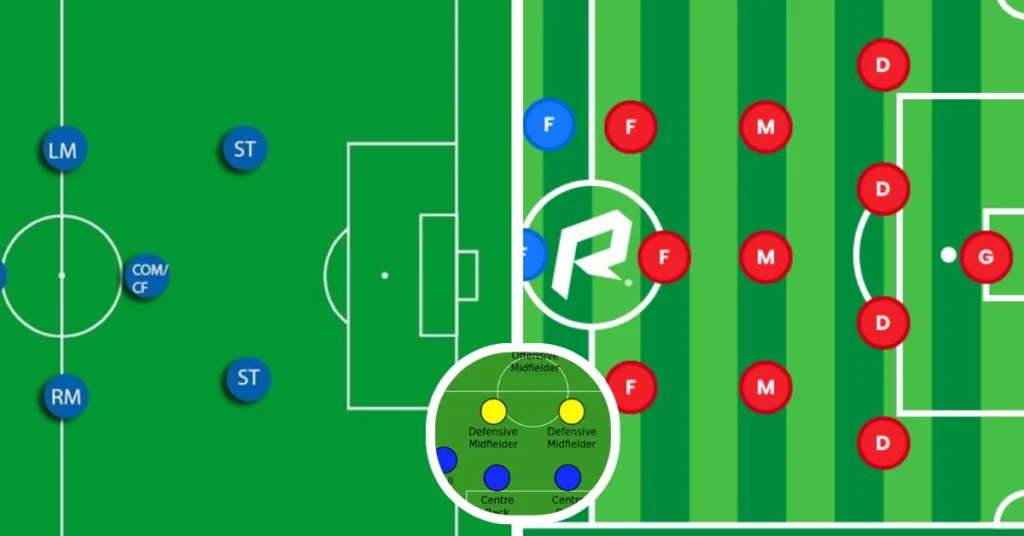Introduction to Soccer
Soccer, known as the beautiful game, captivates millions across the globe. From thrilling goals to stunning saves, every match is a showcase of skill and strategy. But have you ever wondered about one fundamental aspect of the game: how many soccer payers on the field? This seemingly simple question dives deep into the rules and structure that define this beloved sport.
Whether you’re watching from home or cheering in the stands, understanding the player count can enhance your enjoyment of each match. Let’s kick off our exploration by breaking down everything you need to know about how many soccer payers on the field—because knowing more means enjoying more!
The Basic Rules of Soccer
Soccer is played on a rectangular field with two teams. Each team aims to score goals by getting the ball into the opponent’s net. Players can use their bodies, except for their hands and arms, to control the ball.
The game is divided into two halves, typically lasting 45 minutes each. A referee oversees play, ensuring that rules are followed while maintaining fair competition.
Fouls occur when players trip or push opponents unlawfully. Serious infractions may lead to free kicks or penalty shots.
Each match begins with a kickoff from the center circle after a goal is scored or at the start of play. Offside positions can complicate attacking plays but serve to keep gameplay dynamic.
Understanding these fundamentals creates a foundation for appreciating soccer tactics and strategies during matches.
Number of Players on the Field: How Many and Why?
In soccer, the standard number of players on the field for each team is eleven. This includes ten outfield players and one goalkeeper.
The reason behind this specific count stems from historical practices in the evolution of the game. Eleven has become a traditional benchmark that balances play, strategy, and teamwork effectively.
With ten outfielders working together, teams can deploy various formations to create offensive plays or defend against opponents. The presence of a single goalkeeper is crucial as it adds an essential layer to defensive tactics.
Additionally, having eleven players allows for dynamic interactions during matches without overcrowding the field. It fosters individual skills while promoting collective strategies that keep fans engaged throughout the game’s duration.
This structure has proven successful across different levels of competition globally and remains central to understanding how many soccer players are typically involved in matches.
Offside Rule Explained
The offside rule can be a bit tricky, yet it’s crucial in soccer. Essentially, a player is considered offside if they are nearer to the opponent’s goal line than both the ball and the second-to-last defender when the ball is played to them.
This means that players can’t simply hang around near their opponent’s goal waiting for an easy score. They have to time their runs carefully. If they do find themselves in an offside position at the moment of play, it results in a free kick for the opposing team.
However, being in an offside position isn’t always penalized. A player must also be actively involved by interfering with play or gaining an advantage from their position. This distinction adds layers of strategy and excitement to every match while keeping defenders on their toes!
Substitutions and Team Strategy
Substitutions play a crucial role in soccer strategy. Coaches often use them to refresh tired players or alter the game plan mid-match. A well-timed substitution can shift momentum and create scoring opportunities.
Teams typically have three substitutions available during a match at the professional level, making these decisions critical. Each swap can impact team dynamics significantly, as new players bring different skills and energy levels.
In youth leagues or amateur games, the rules may vary. Some allow unlimited substitutions, encouraging player development and participation.
Strategically managing substitutions requires foresight. Coaches must consider not just physical fatigue but also tactical adjustments based on the opponent’s formation and performance trends throughout the game.
Understanding when to make changes is an art that combines intuition with experience. This aspect of soccer showcases teamwork beyond just those on the field; it involves communication between coaches and players for optimal results.
Variations in Number of Players for Different Levels of Play
Different levels of soccer bring unique variations in player count, adapting to age and skill. In youth leagues, for instance, smaller teams often take the field with five to seven players each. This arrangement encourages participation and helps young players develop fundamental skills.
As players progress into high school or adult recreational leagues, the standard number increases back to eleven per side. This allows for more complex strategies while still being accessible enough for various skill levels.
Professional matches always feature eleven players on each team. However, some tournaments may implement special rules like “7-a-side” competitions that emphasize agility and speed over sheer numbers.
Futsal is another example where teams consist of just five players each. The confined space demands quick thinking and fast-paced action—different from traditional soccer dynamics but equally thrilling. Each variation serves a purpose tailored to its specific audience.
The Role of Referees in Enforcing Player Count Rules
Referees play a crucial role in maintaining the integrity of soccer matches. They are responsible for ensuring that the rules regarding player count are strictly enforced. Each team is allowed 11 players on the field, including one goalkeeper.
During a match, referees closely monitor substitutions and any potential infractions that could lead to an uneven number of players. If a team has more than 11 active players at any time, they risk penalties or free kicks awarded to the opposing side.
Communication is key for referees. They often signal substitutions with clear gestures and ensure both teams adhere to these changes promptly. Additionally, they keep track of any dismissals due to fouls or misconduct, which can affect player counts as well.
Their authority helps maintain fairness throughout the game, allowing teams to compete under even conditions without confusion or disputes over player numbers.
Common Misconceptions about Number of Players on the Field
Many people believe that all soccer matches feature the same number of players per side. While 11 players are typical for professional and most amateur games, this isn’t a universal rule.
Some think substitutions don’t impact player count during a match. However, teams can make strategic changes to adapt tactics or maintain energy levels throughout the game.
Another misconception is that goalkeepers have different rules regarding player counts. In reality, they count as one of the 11 players on their team just like everyone else.
Additionally, many assume youth leagues always follow adult regulations concerning numbers. In fact, younger age groups often play with fewer players to encourage skill development and engagement.
Understanding these nuances helps clarify how various factors influence how many soccer players are on the field in any given match.
Final Thoughts and Tips for Understanding Soccer Rules
Understanding the rules of soccer can enhance your enjoyment of the game. Knowing how many players are on the field, including substitutes and variations in different leagues, allows you to appreciate team strategies better.
Pay attention to the offside rule; it often sparks lively debates among fans. Familiarize yourself with how referees enforce player count rules during matches. This knowledge not only boosts your appreciation but also enriches conversations with fellow enthusiasts.
As you explore this dynamic sport further, keep an open mind about common misconceptions regarding player numbers. Engaging with these aspects will deepen your connection to soccer and make every match even more thrilling to watch or play in.




